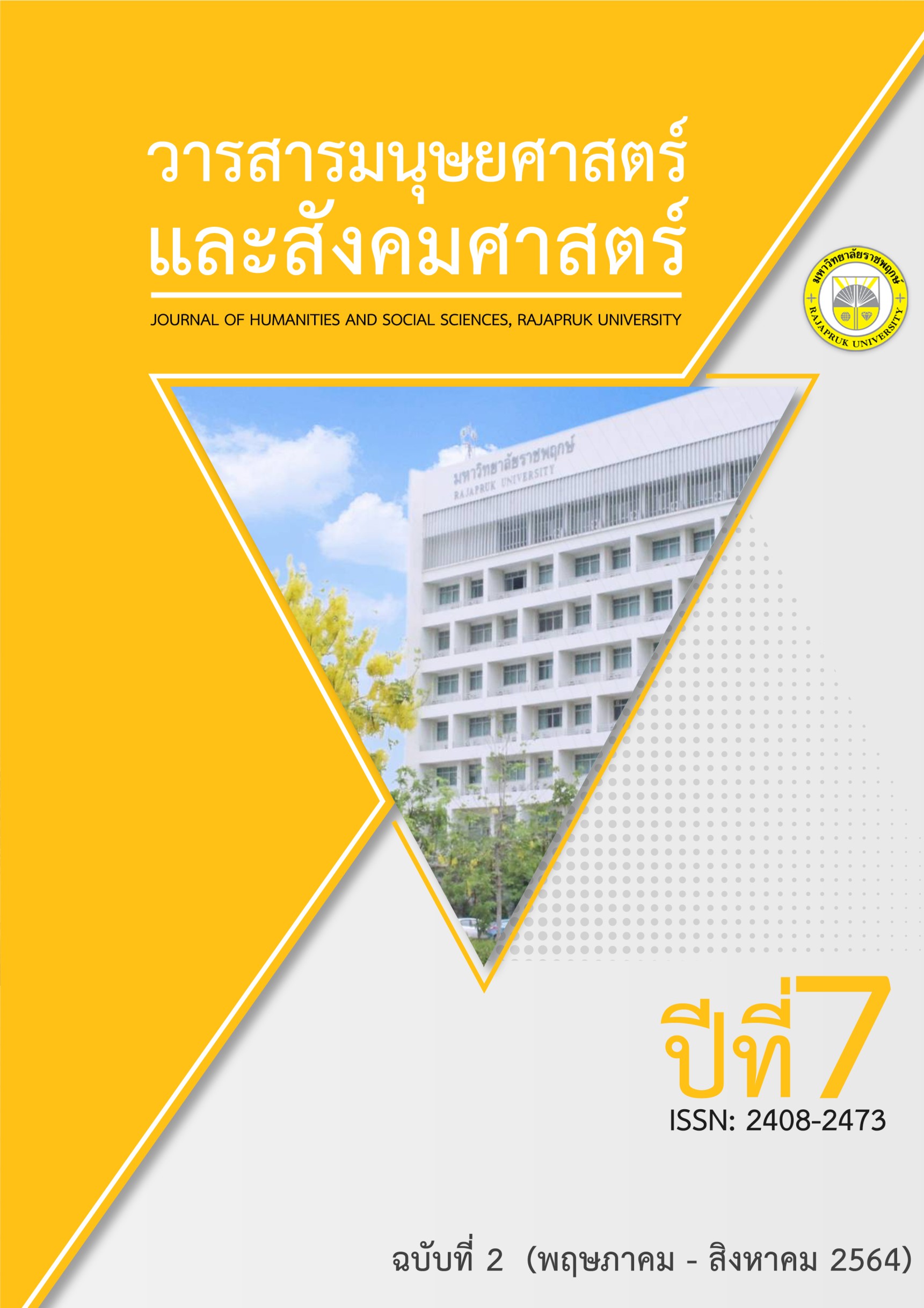Preschool Teacher’s Roles in Child Protection in School under the Office of Bangkok Primary Educational Service Area
Main Article Content
Abstract
The purpose of this research was to study preschool teacher’s roles in child protection in 3 aspects, which were child care and education, helping child and family and collaboration with other professionals. The samples were 123 preschool teachers in school under the Office of Bangkok Primary Educational Service Area. The research instrument was a questionnaire form. The data was analyzed using frequency distribution, percentage, arithmetic mean, and standard deviation. The research results founded that preschool teacher’s roles in child protection in all 3 aspects performance at a high level. The highest score was child care and education (mean=4.72, SD=0.09), followed by helping child and family (mean=4.39, SD=0.05) and collaboration with other professionals (mean=4.17, SD=0.07), respectively. When considering each aspect, the research results showed that: 1) High-quality care and education: the highest mean was high-quality education, and the lowest mean was management of promoting child well-being activities. 2) Helping child and family: the highest mean was child help operation, and the lowest mean was reporting and referral. 3) Collaboration with other professionals the highest mean was promoting partnership with family, and the lowest mean was building collaboration with professionals.
Article Details
References
ณัฏฐภรณ์ หลาวทอง. (2561). การสร้างเครื่องมือการวิจัยทางการศึกษา. พิมพ์ครั้งที่ 2. กรุงเทพฯ: จุฬาลงกรณ์มหาวิทยาลัย.
ธันยา รุจิเสถียรทรัพย์. (2560). การศึกษาเงื่อนไขที่ก่อให้เกิดการพัฒนาระบบคุ้มครองเด็กให้ครอบคลุมและเข้าถึงกลุ่มเด็กบริเวณชายแดนไทย-พม่า. วารสารสังคมสงเคราะห์ศาสตร์, 25(2): 47-68.
ประคอง กรรณสูต. (2542). สถิติเพื่อการวิจัยทางพฤติกรรมศาสตร์. พิมพ์ครั้งที่ 3. กรุงเทพฯ: จุฬาลงกรณ์มหาวิทยาลัย.
พระราชบัญญัติคุ้มครองเด็ก พ.ศ.2546. (2548). ราชกิจจานุเบกษา. หน้า 1–28.
มูลนิธิศูนย์พิทักษ์สิทธิเด็ก. (2561). ความจริงของเด็กที่ถูกทำร้าย ตอนที่ 2 การบำบัดฟื้นฟูเด็กตามแนวทางมูลนิธิศูนย์พิทักษ์สิทธิเด็ก. ค้นเมื่อวันที่ 5 พฤษภาคม 2563, จาก https://www.thaichildrights.org/articles/article-treat/ความจริงของเด็กที่ถูกทำร้าย.
สำนักงานคณะกรรมการการศึกษาขั้นพื้นฐาน. (2557). คู่มือการคุ้มครองและช่วยเหลือเด็กนักเรียน. กรุงเทพฯ: โรงพิมพ์ชุมนุมสหกรณ์การเกษตรแห่งประเทศไทย จำกัด.
สำนักพัฒนาสังคม. (2562). ข้อมูลสถิติความรุนแรงในภาพรวมของกรุงเทพมหานคร พ.ศ.2560–2561. ค้นเมื่อวันที่ 24 ธันวาคม 2562, จาก http://www.bangkok.go.th/social/page/sub/13753/สถิติความรุนแรงในภาพรวมของกรุงเทพมหานคร.
สำนักวิชาการและมาตรฐานการศึกษา. (2560). หลักสูตรการศึกษาปฐมวัย พุทธศักราช 2560. กรุงเทพฯ: ชุมชนสหกรณ์การเกษตรแห่งประเทศไทย.
องค์การยูนิเซฟ ประเทศไทย. (2562). ประเทศไทยยังขาดความเชี่ยวชาญด้านการคุ้มครองเด็กระดับชุมชน. ค้นเมื่อวันที่ 21 ธันวาคม 2562, จาก http://www.unicef.org/thailand/th/stories/ประเทศไทยยังขาดความเชี่ยวชาญด้านการคุ้มครองเด็ก
องค์การยูนิเซฟ ประเทศไทย. (2558). การคุ้มครองเด็ก. ค้นเมื่อวันที่ 20 ธันวาคม 2562, จาก http://www.unicef.org/Thailand/th/ภารกิจของยูนิเซฟ/การคุ้มครองเด็ก.
องค์การยูนิเซฟ ประเทศไทย. (2559). ผลกระทบความรุนแรงในโรงเรียนต่อเด็กและแนวทางสำหรับโรงเรียนที่เป็นมิตรกับเด็ก. ค้นเมื่อวันที่ 3 กุมภาพันธ์ 2563, จาก http://www.unicef.org/thailand/th/2016/09/violence-against-children-at-school.html
Bailey, D. B., Raspa, M., and Fox, L.C. (2012). What is the future of family outcomes and family center Services?, Topics in Early Childhood Special Education, 31: 216-233.
Breyer, J.R., and MacPhee, D. (2015). Community characteristics, conservative ideololy, and child abuse rates. Child Abuse & Neglect, 41: 126-135.
Child Matters. (2019). Why is child protection training so important?. Retrieved on 20th January 2020, from http://www.childmatters.org.nz/166/child-protection-training/why-is-training-so-important.
Creedan, K. (2008). Brain functioning and dynamics involved in problematic or abusive behavior. Master’s thesis University of Massachusetts Department of Education.
Feng, J., Huang, T., and Wang,C. (2010). Kindergarten teachers’ experience with reporting child abuse in Taiwan. Child Abuse & Neglect, 34: 1937-1946.
National Association for the Education of Young Children. (2009). Where we stand on child abuse prevention. Retrieved on 14th December 2019, from https://www.naeyc.org/sites/default/files/globally-shared/downloads/PDFs/resources/position-statements/ChildAbuseStand.pdf
Yamane, T. (1973). Statistics: An Introductory Analysis. 3rd ed. New York: Harper Row Publication.


